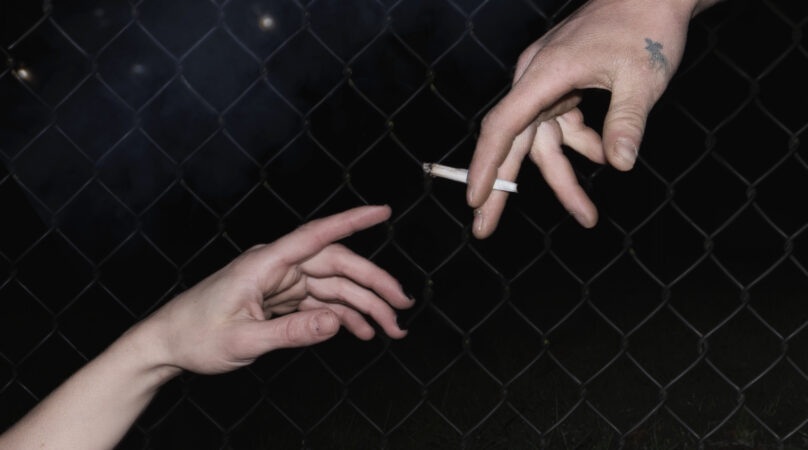L’artista di Seattle racconta, pezzo per pezzo, il suo nuovo Long Playing; dal processo creativo alle storie di vita sul filo del rasoio che l’hanno ispirato.
Lo scorso 13 ottobre è uscito Jaywalker, il secondo album di MØAA, progetto solista di Jancy Buffington, per la label italo-americana WWNBB (We Were Never Being Boring Collective). Originaria di Seattle, MØAA ha debuttato nel 2021 con Euphoric Recall, che l’ha portata a suonare in giro per gli Stati Uniti, l’Europa e il Regno Unito, condividendo il palco con artisti del calibro di Yves Tumor, Clap Your Hands Say Yeah e Film School, su palchi di fama internazionale come quello del SXSW di Austin, il nostrano Ypsigrock (in uno scenario pandemico e un po’ surreale in cui il pubblico era costretto a stare seduto), e il MIL Festival di Lisbona.
Per circa tre anni, MØAA ha vissuto nella meravigliosa Venezia, dove ha dato vita alla maggior parte dei brani che compongono Jaywalker. Una volta tornata permanentemente nella sua città natale, ha completato il disco, attribuendogli un concept più coeso e definito. Squadra che vince non si cambia e infatti MØAA ha collaborato nuovamente con Andrea Volpato (ex New Candys), che ha co-prodotto, registrato e mixato l’album al Fox Studio di Seattle. Andrea Volpato ha anche suonato le chitarre e il basso acustico, programmato le drum machine e contribuito alle seconde voci. È anche chitarrista dal vivo del progetto.
***
Jaywalker è stato anticipato dalla title-track e dal singolo The One, usciti rispettivamente nello scorso luglio e ottobre. Perché Jaywalker? Letteralmente, un jaywalker è chi attraversa fuori dalle strisce oppure col rosso, qualcuno che rischia sempre e gioca a dadi con la morte. Tutti ne conosciamo almeno uno. Dall’esterno le sciarade dei jaywalkers potrebbero apparire alquanto folli o rivoltanti, ma sotto la superficie si nasconde un desiderio individuale di attenzione e di compagnia ostacolato dall’incapacità di raggiungerlo, dal bisogno di mostrarsi invincibili.
“È un album che cattura quei momenti di quiete notturna che si trovano sull’orlo del pericolo, le missioni notturne in cui ti alleni con un amico a vagare per le strade. Tremolanti luci fluorescenti alle stazioni di servizio, accessori sparsi per l’auto, momenti che si muovono lentamente e poi, all’improvviso, cambiano ritmo… e la sporcizia. È qui che il jaywalker prospera nel caos, nell’imprevedibilità e nel nascondersi.”
Ho chiesto a MØAA di sviscerare i singoli pezzi che compongono il disco e il concept che li attraversa e caratterizza, e di approfondire il processo di songwriting e produzione in un’intervista track-by-track. Di seguito le lascio la parola.
Jaywalker track-by-track
[ITA]
“Ho iniziato a lavorare su Jaywalker nella mia stanza veneziana durante il lockdown e l’ho poi ultimato una volta rientrata a Seattle. Senza averne una chiara intenzione, ho sviluppato un concept album, data la presenza di temi ricorrenti in ogni pezzo. L’idea dell’archetipo del jaywalker è arrivata da un libro che ho letto più volte negli anni; si tratta di una persona che non riesce a stare lontana dal pericolo e dal caos, che gravita sempre intorno al filo del rasoio. Le canzoni del disco sono state ispirate da storie di persone vicino a me che calzano a pennello questa descrizione – chi per problemi di dipendenza da droghe o per difficoltà relazionali.
I sentimenti di nostalgia e desolazione, per me intrinsecamente legati alle storie dei jaywalkers che ho incontrato nella mia vita e di cui parlo, mi hanno guidato anche per quel che riguarda l’identità visiva dell’album.”
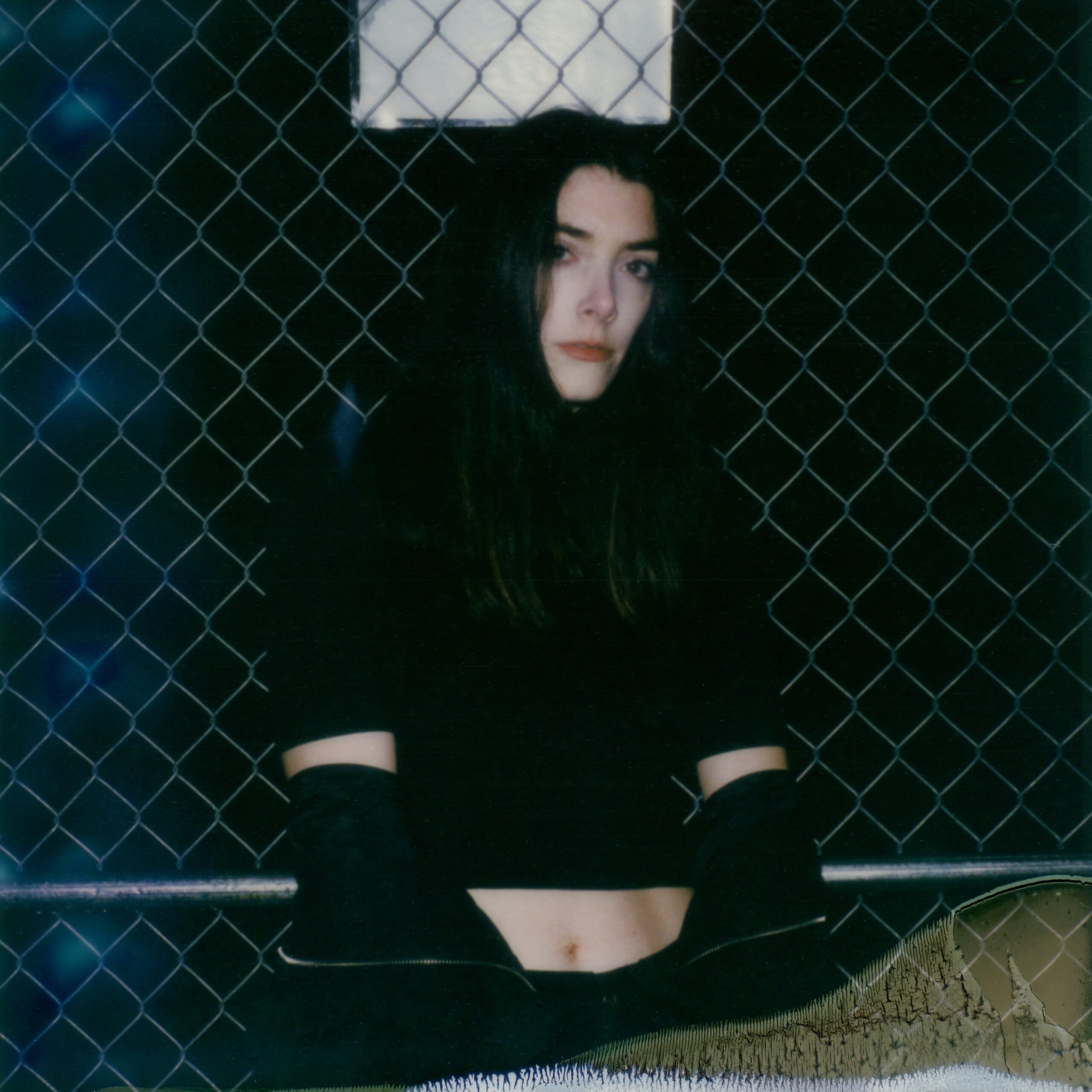
1. JAYWALKER
“Ho cominciato a buttar giù le linee di basso e chitarra della strofa appena dopo aver finito il mio primo album Euphoric Recall. Ero ancora a Venezia. Anche la melodia vocale è arrivata in quei giorni, seppure in forma primordiale. Soltanto un anno e mezzo dopo, tornata a Seattle, ho completato il ritornello e la coda del pezzo, mentre stavo strimpellando su Logic come faccio sempre, looppando le parti di basso e chitarra. Le lyrics sono nate in modo molto spontaneo, sempre a Seattle. Nel giro di venti minuti erano pronte.
Ho scelto di posizionare la title-track come incipit del disco perché la vedo come un perfetto assaggio dei temi e delle storie che ho trattato. È anche una delle mie canzoni preferite.
Per il sound di questo pezzo e dell’album in generale avevo le idee molto chiare: volevo qualcosa di più pulito rispetto al mio debutto. Una volta in studio, le ho presentate ad Andrea e ci siamo allineati subito. A questo giro, ho scelto di usare la drum machine – sia in fase di creazione delle demo che di registrazione, con la drum machine 909 – invece della batteria, perché più consone all’energia delle canzoni. Andrea ha lavorato al sound della drum machine che si sente sul disco partendo da zero, scrivendo poi la parte midi basandosi su quello che c’era nelle mie demo. Ha poi imparato e suonato le parti di chitarra e basso che avevo scritto e calibrato i suoni seguendo le idee che avevo buttato giù in fase di scrittura.
Nella demo di Jaywalker avevo incluso un dotted triplet delay che Andrea ha pensato di portare alla luce suonando le parti e poi sovrapponendole ad un altro take, in cui ha usato un reverse delay.”
2. THE ONE
“Ero a Venezia in un momento che ricordo benissimo; tutte le luci erano spente a parte una che si muoveva creando una sorta di vortice luminoso. Ecco, proprio quel movimento continuo mi ha ispirata a scrivere The One. Ho composto la linea melodica da sdraiata, sul letto, mentre fissavo quella luce che si muoveva sul soffitto. Ricordo bene di aver pensato che questo pezzo fosse molto diverso da tutti gli altri e che questo cambiamento fosse dovuto dalla scelta di scriverlo partendo da una linea di basso elettronico invece che acustico.
Anche per The One, ho portato le mie idee in forma di demo ad Andrea e lui ha sviluppato il pezzo, aggiungendo poi la parte di chitarra che congiunge il primo ritornello alla seconda strofa – qualcosa di estremamente distinguibile per chi conosce il sound e il songwriting di Andrea. Per i synth invece, i suoni del disco sono esattamente come li avevo scritti e registrati su Logic, usando un MS2000 e alcuni plugins.
La canzone parla di limerenza e dei problemi che derivano da essa, anche se, al momento della scrittura, non l’avevo ben chiaro. È una cosa che mi succede spesso quando scrivo; riesco a dare un significato ai pezzi solo a cose fatte.”
3. SUCH A SAINT
“Mi ricordo quando l’ho scritta, in Italia, e di aver pensato al casino che facevano le chitarre e il basso elettronico… Le parole e la linea vocale ancora non le avevo – quelle sono arrivate una volta a Seattle. Such A Saint è un po’ come The One, un pezzo molto nuovo, diverso per me, specialmente per la velocità con cui canto. Il suono del sintetizzatore, poi, è parecchio astratto; l’ho usato per dare consistenza alla canzone, diciamo. L’abbiamo registrata con un basso elettronico ma dal vivo la suoniamo con uno acustico.
Il testo è molto schietto, dritto al punto, e l’ho composto in un’unica session. Arrivata in studio, il pezzo per me era già pronto, poi Andrea ha pensato di aggiungere una parte di chitarra proprio al termine della canzone. Anche le idee per i suoni erano già state ultimate in fase di scrittura. Andrea ha, come da tradizione, trovato il modo di dar loro vita, prestando anche la sua voce per il coro finale in cui canta “You don’t wanna be”.”
4. LIKE ME
“In tutta onestà, non ricordo assolutamente come sono nate le varie parti del pezzo. La mia memoria è proprio offuscata. L’unica cosa che so con certezza è che ero in Italia quando ho composto gli accordi del Rhodes all’inizio della canzone perché ho un video proprio di quel momento. L’altro sintetizzatore che si sente nell’intro è merito di Andrea; partendo dalla mia demo, ha poi recuperato e registrato con un Fender Chroma Polaris, un synth analogico degli anni ’80.
La linea di basso del ritornello che ho scritto e registrato nelle mie demo è stata poi cambiata e armonizzata da Andrea in studio (è stata una sua idea), ma a me mancava quella melodia iniziale e così ho pensato di riproporla in forma di synth. Come al solito, in fase di scrittura e registrazione delle demo, ho composto tutte le linee melodiche del pezzo per ogni strumento. Andrea ha poi dato un tocco speciale alla coda della canzone con un fraseggio alla chitarra.
Credo che Like Me sia la canzone più delicata che abbia mai creato. Quando ho scritto la melodia del ritornello, mi sono sentita un po’ spiazzata! In più, credo che il testo lasci poco spazio all’interpretazione, a differenza di tanti altri del mio repertorio. Almeno per me…”
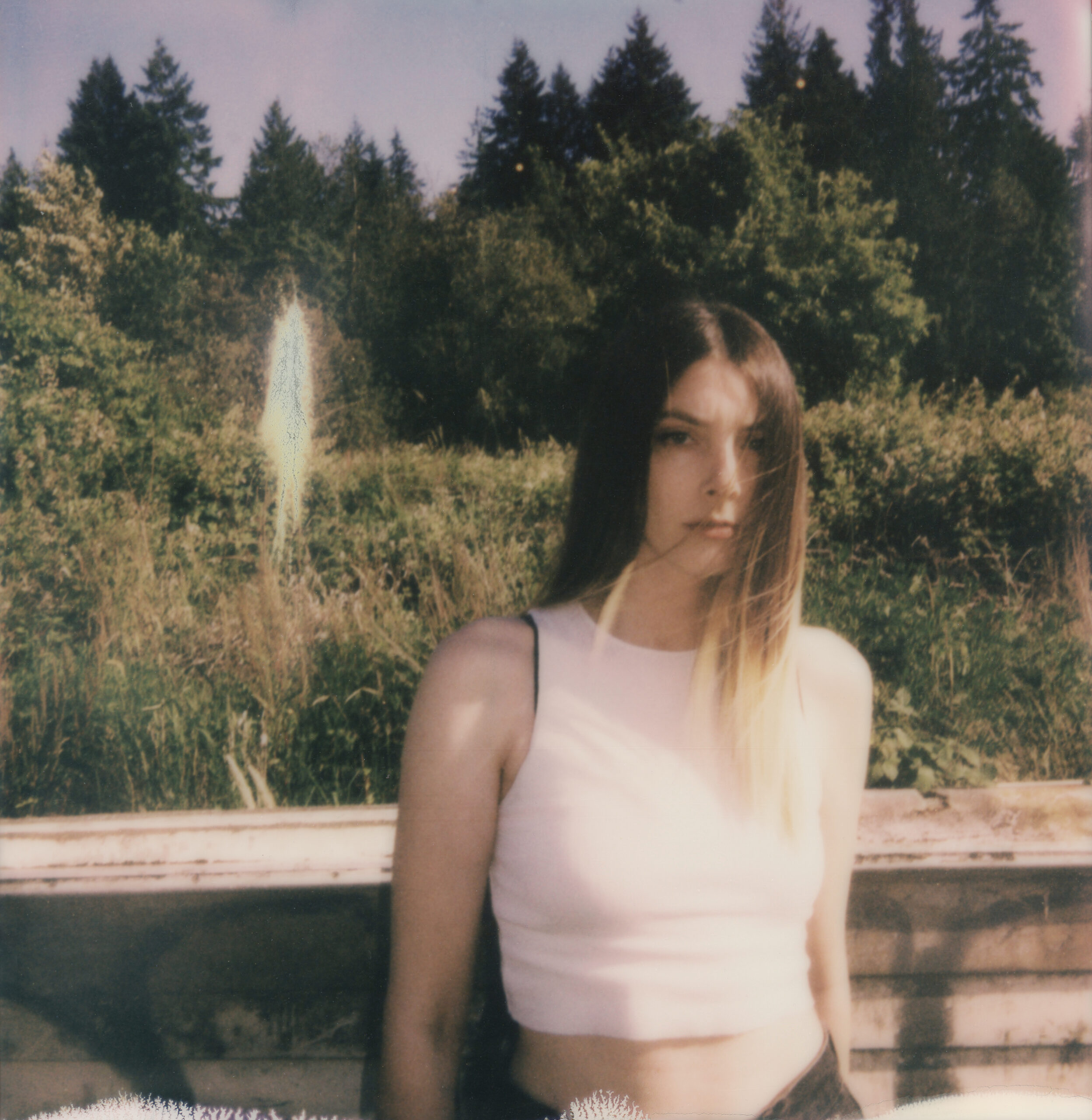
5. CHALK LINES
“Il testo e le voci li ho scritti in una manciata di ore. Ricordo che Andrea continuava a canticchiare il ritornello dopo avermi sentita lavorarci per ore, chiusa nella mia stanza. È sicuramente una delle nostre canzoni preferite.
Andrea ha aggiunto una linea di chitarra nell’outro, ma a parte questo, il pezzo era già pronto. Il brano che potete trovare sul disco è estremamente fedele alla mia demo. La linea di basso l’ho insolitamente composta usando una chitarra, cosa che mi capita spesso. A volte sono troppo pigra e uso la chitarra se il basso non è a portata di mano! In studio, Andrea ha aggiunto rispettivamente degli accordi arpeggiati alla strofa ed alcuni bicordi al ritornello per dare più colore alle mie linee.
Il pezzo parla di come la fine di una relazione o anche la morte ti impediscano di di vedere come una persona possa cambiare e crescere. Sono cose che ho provato e che credo abbiano influenzato le mie parole.”
6. K.O.
“L’ho scritta per ultima, nel mio bedroom studio a Seattle. Stavo cazzeggiando col mio drum pad ed è uscita un’idea per il beat del pezzo. Non me ne ero resa conto, ma avevo scritto un ritmo sincopato, spezzato; Andrea me l’ha poi fatto notare. La linea di synth, così come le parole, sono uscite in maniera molto naturale, velocemente. Di solito mi trovo a partire dalla linea vocale e poi su quella compongo il testo, mentre stavolta è arrivato tutto insieme.
Sono molto affezionata al testo e al mood di questa canzone. È una di quelle che preferisco. Riesco solo adesso a vedere il nesso tra le mie parole e un trauma che ho subito. È una cosa strana perché non ci ho lontanamente pensato al momento.”
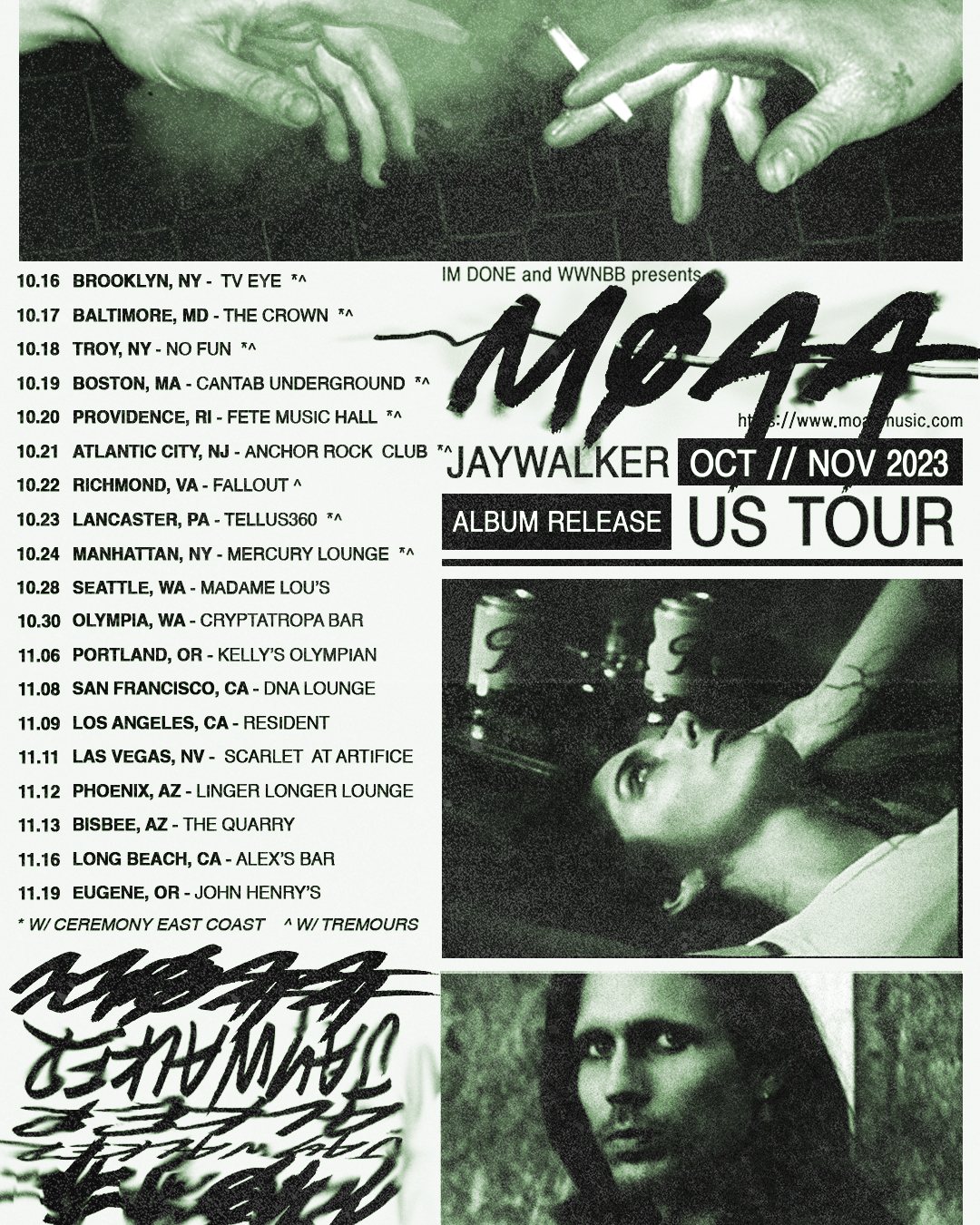
MØAA è attualmente impegnata in un tour nella West Coast, prima di tornare in Europa nel 2024.
7. MADE IN THE SHADE
“Il pezzo che si sente sul disco non c’entra niente con l’idea che ho avuto inizialmente. L’unica cosa che la demo e la registrazione finale hanno in comune è il riff del Rhodes che si sente all’inizio. È stato Andrea a consigliarmi di tornare sulla demo e lavorarci ancora, e così ho fatto. A volte riascolto la prima bozza e mi piace sempre, anche perché ha un vibe molto diverso dall’altra.
Sono molto orgogliosa del testo della canzone; è stata la primissima volta per me in cui racconto una storia che non ho vissuto personalmente. Nella mia testa, la trama è una sorta di incrocio tra Requiem For A Dream e Fargo.”
8. ALL BLOOD IS LIFELESS
“Ci è mancato poco che non togliessi il pezzo dalla track list finale…! È stato Andrea a convincermi del contrario. Credo sia la canzone più leggera e allegra che abbia mai scritto. Ho avuto un’illuminazione per il riff del ritornello un giorno mentre stavo strimpellando alla chitarra. Inizialmente avevo buttato giù una linea vocale solo per le strofe, ma con un po’ di spinta da parte di Andrea e tanta pazienza sono riuscita a trovare qualcosa che mi convincesse anche per il ritornello. A volte mi fisso sui riff e quasi mi dispiace oscurarli con la voce.
Ci sono alcuni punti del testo che adoro, come quando dico “bloody dead end”, proprio nel ritornello. Parlo di una relazione che è giunta al termine da tempo, che doveva finire da un pezzo. Le parole creano un’immagine molto vivida, secondo me.”
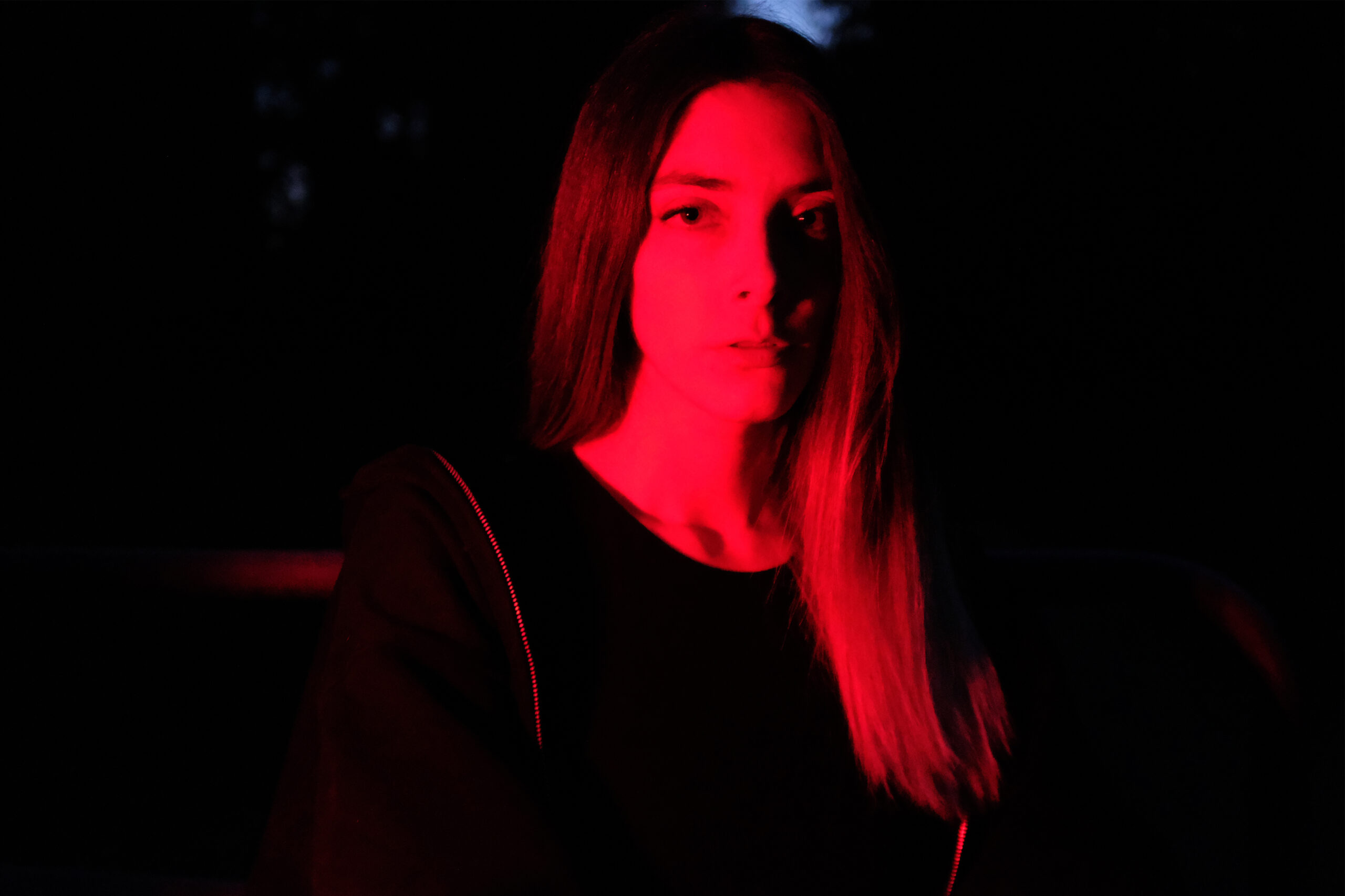
9. UNDERCOVER
“La parte che mi piace da impazzire di Undercover è quella sorta di synth un po’ Sci-Fi nel ritornello, registrato con un Korg R3 – che ho usato soltanto in questo pezzo. E anche le lyrics. Trovo che alcune frasi colgano il punto in pieno, come “kiss like sand, falling through my hands” e “I’ve been on the edge with your dull blade out, for weeks now”. Sono molto orgogliosa di quello che è uscito fuori: è un pezzo armonioso e coerente che ho scritto all’improvviso, senza pensarci troppo.”
10. SE 24TH ST
“Il mood di questa canzone l’ha resa la conclusione perfetta. Anche questa è nata in un modo e poi registrata in un altro. Ci ho lavorato per più di un anno perché non ero mai soddisfatta di cosa stesse venendo fuori.
Sono partita da un beat trap, con la terzina di charleston tipica del genere, che poi ho rimosso seguendo il consiglio di Andrea. La linea di basso nel ritornello mi sembrava incompleta e così Andrea mi ha dato una mano a darle un senso. Alla fine del pezzo si sente anche un fraseggio di chitarra che ha scritto Andrea che per qualche motivo mi ricorda un po’ Mac Demarco. Per le armonie vocali ho preso ispirazione dal Rap e R&B che ascoltavo da ragazzina, tipo quelle di Bone Thugs-n-Harmony.”
***
Grazie a MØAA per averci fatti entrare nel suo bedroom studio e per aver condiviso il suo processo creativo così in dettaglio. MØAA farà ritorno in Europa a Febbraio e noi non vediamo l’ora. Tutte le date verranno pubblicate sul suo profilo Instagram ufficiale.
(foto: Valerie Ann)
LINK
Instagram
Facebook
Twitter
Spotify
YouTube
[ENG]
“Hey there, this is Jancy from MØAA. This is my second album Jaywalker which I started writing in my bedroom studio during COVID in Venice and later finished writing after moving back to Seattle. It ended up being kind of a concept album after noticing some themes that kept coming up while writing the songs. The Jaywalker is a kind of archetype that was inspired by a book that I’ve read many times.
In general, the Jaywalker is the type of person who is always walking on the edge in life and who can’t help but stay close to chaos, and a lot of the ideas behind the song lyrics come from my personal experience and people close to me who have struggled with addiction and dysfunctional relationships.
For the visuals of this album, I wanted to couple nostalgia and bleakness, which are two emotions I personally feel are paired together when I reflect on these stories and people in my life.”
1. JAYWALKER
“I started writing the bass and guitar for the verse pretty soon after completing my first album “Euphoric Recall” so I was in Venice, Italy at the time that the bones of the song were created. The vocal melody I also sketched out at this time without lyrics… But it took about a year and a half later after moving to Seattle for me to write the bass and electric guitar for the chorus and outro. I was just noodling on the guitar and bass as I usually do with Logic and the individual parts on loop until I found the next instrumental part.
I also wrote the lyrics in Seattle and they came about very suddenly, in a matter of 20 minutes probably. I wanted to have this song (the title track) as the opening to the album as a sort of introduction to the concept because I felt this song most clearly conveys or summarizes the themes of the record and it’s also a personal favourite of mine from the album.
For the sound, I had the overall sound direction sketched out in my demo, and when I brought it to Andrea Volpato (Fox Studio) he understood that for this song and the rest of the album I was going for a much cleaner sound than the previous album. I also wanted to do drum machines instead of acoustic drums for this album because it just felt right for the energy of all of the songs, and I was specifically writing my demos with 909 drum machines. He created the sound from scratch of the drum machine that you hear on the record and wrote the midi for it based on what I had written in my demo.
He also learned the bass and guitar parts that I had written in my demo and performed them on the record, and he again picked the sounds for those based on the type of sounds I had in my demo…for example, I had a dotted triplet delay on the guitar in the chorus in my demo but Andrea decided instead to perform what the dotted delay was creating sonically and then he layered that guitar with another take which had a reverse delay which was his idea for the effects.”
2. THE ONE
“This song I also wrote in Venice, Italy. I remember it vividly because I had all the lights off and a swirling rotating light in my bedroom studio that carried me into a mood that inspired the track. I wrote the vocal melody while lying on my bed and recording with my microphone staring at that light moving across the ceiling. I remember distinctly feeling like the song was very different from songs I had written previously and it might have to do with the fact that it was the first song I wrote with an electronic bassline instead of acoustic bass.
Again I brought the completed demo to Andrea with the sound sketched out, but some sounds were further developed by him and he wrote/ added that guitar after the first chorus that goes through the second verse (I think that is pretty recognizable for those who know his style of guitar playing and writing).
The synth sounds in this song and most of the others on the album were exactly as I had written them in Logic, some using an MS2000 and some plug-ins. I would say that the lyrics are basically about struggling with limerence, but that was not apparent to me until after writing it and reading back the lyrics (which is most often the case with my writing process).”
3. SUCH A SAINT
“I remember writing this in Italy and thinking how chaotic all of the guitars and electronic bass were…I hadn’t written the vocal melodies or lyrics yet, those came later after moving to Seattle. This was another song like “The One” where the style of writing felt new to me, at least when it came to the fast pace of the vocals. The synth is also very abstract, and I used it mainly as a texture in the song. There are a lot of synths and guitars packed into the song, and this song also has only an electronic bass in the recording, but for the live set, we decided to use acoustic bass.
The lyrics are very direct and honest, and also came very quickly, all pretty much in one sitting. Andrea added a guitar part at the very end of the song, but aside from that the song was finished in my demo before I brought it to his studio. The sound ideas for the guitar and bass were completed in my demo, but of course as usual Andrea polished the sounds and brought them to life using his recording techniques and performance. This is also the only track where his vocals are featured toward the end of the song when he chants “You don’t wanna be”.”
4. LIKE ME
“I actually do not recall exactly when I wrote all of the parts for this song… It’s a bit of a blur. I remember only when I wrote the intro rhythm Rhodes chords because I have a video of the first moment I wrote it in Italy. The other synth in the intro was tweaked by Andrea from my demo and he found a really unique analog synthesizer from the 80’s in Italy that is called Fender Chroma Polaris that we recorded in the album. The original bassline in the chorus that I wrote in my demo actually was changed to a harmony of the original bassline that I wrote (it was Andrea’s idea to change this), but I missed the feeling of the bassline I had originally written so I suggested we put the melody back in with an additional synth during the chorus. I wrote all the guitar, bass, and synth parts as usual in my demo, but Andrea added a really cool guitar lick at the end of the song.
This is probably the softest song I have ever written, and it took me off guard when I first wrote the vocal melody for the chorus because it felt very different from what I was used to writing. This track is also lyrically very direct and doesn’t leave much up for interpretation (at least from my perspective).”
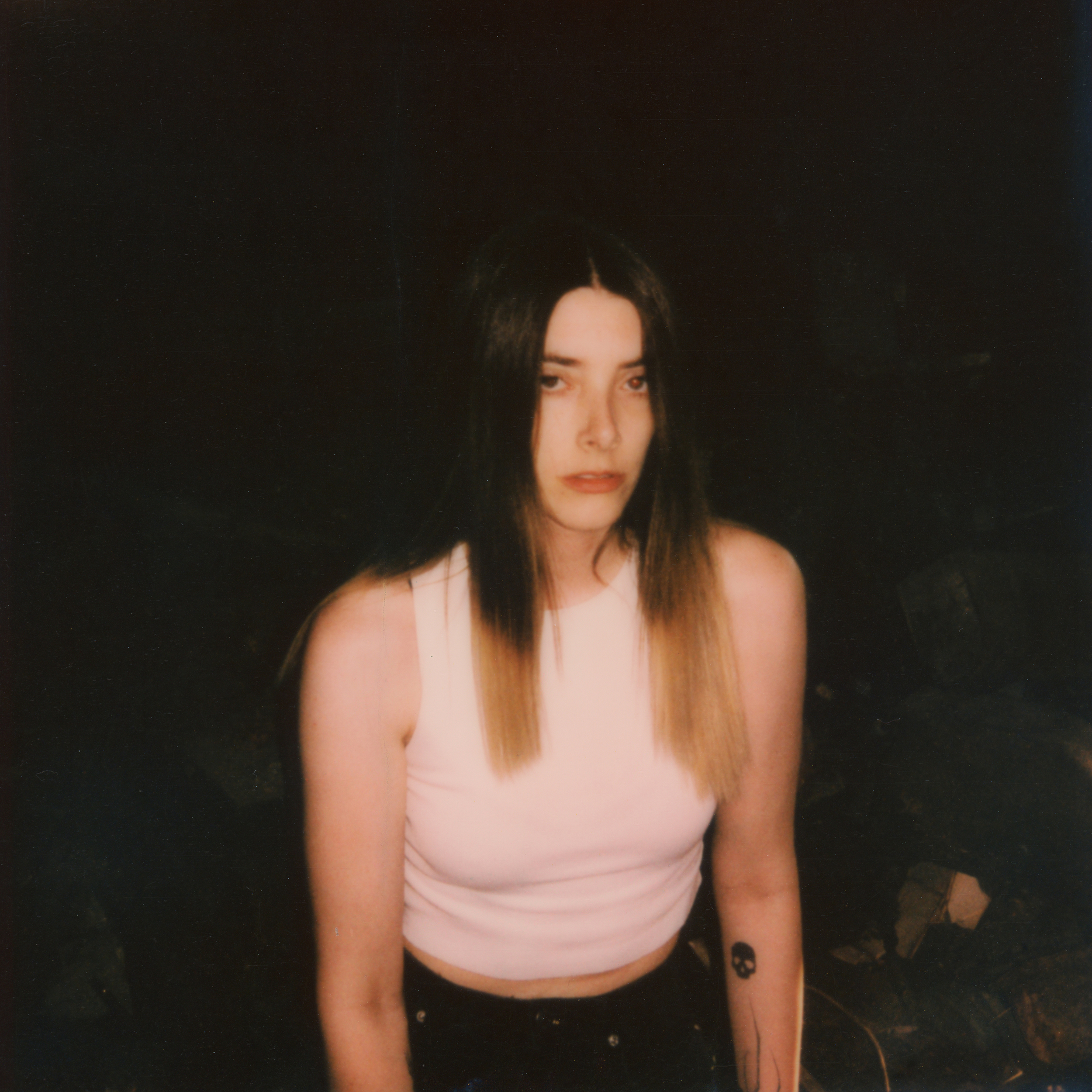
5. CHALK LINES
“The lyrics and vocals were written pretty quickly for this one, I recall Andrea singing the chorus for fun after he overheard me working on the demo in my room for several hours. This one is definitely a favourite of mine and Andrea. The structure and all the parts I had ready before the studio, but he added that guitar in the outro which is really cool. For the sounds, I would say this was also ironed out in my demo, the synth is the exact one I used originally that is in the record, and the guitar and bass sounds are very similar to the original too. I actually wrote the bassline with a guitar at first, and of course, when it got to the studio we recorded it with acoustic bass.
Sometimes that happens to me if I’m too lazy or focused when writing and I don’t have my bass nearby, I’ll just write the bass part with the lowest string on the guitar. I wrote the verse and chorus initially as single-note lines, and Andrea expanded on those with arpeggiated chords in the verse and bichords in the chorus. I think that the lyrics are about either not getting to see someone develop as a person after a breakup or after they die, and I’ve experienced both in my life so I’m pretty sure that’s where the song is stemming from.”
6. K.O.
“This is the final song I wrote for the record and was written entirely in my Seattle bedroom studio. I was messing around with a drum pad and wrote the beat for it. I wasn’t aware of it at the time, but Andrea told me later that it was a broken beat. The synth sounds are what I wrote in the demo and the lyrics came to me immediately when I wrote the song, usually I had to make a vocal melody with just vocalizations and then the lyrics came later but this was right away.
I personally love the lyrics and the mood of this song, it is one of my favourites on the album. I recognized only after writing it that it had to do with a traumatic event getting jumped, but what was weird is that it wasn’t on my mind at that time so it was surprising that it came out that way.”
7. MADE IN THE SHADE
“This is one of those songs that started out completely different from its final product. In fact, I still have the original demo which is a completely different song, with a different vocal melody but the same Rhodes riff that you hear in the beginning. Andrea was the one who suggested I keep working on the song because the demo was incomplete, and when I went back to my writing room to keep working on it the song ended up morphing into what you hear now. I still miss the old demo/song sometimes and will listen to it, because it has a totally different mood to it.
However, I really like the lyrics of this version, because it was the first song where I tell a story that is someone else’s, and it’s very plot-driven. In my mind, the story is kind of like combining the movies Requiem for a Dream and Fargo together.”
8. ALL BLOOD IS LIFELESS
“I almost removed this song from the album but Andrea insisted I keep it. It’s probably the happiest MØAA song I’ve written, but I love the chorus riff that just kind of landed on my lap one day when playing around with guitar in my bedroom studio. At first, the song just had that riff in the chorus, with singing only in the verses… But Andrea said I should try writing a vocal melody for the chorus so I tried it, and it took some time to figure out something that I liked.
Sometimes I get so obsessed with a guitar riff that I’ve written that I don’t want to cover it up with vocals, but this vocal melody played nicely with the riff and feels like a bop. There are certain lyrics in this one that I like a lot, like “bloody dead end” in the chorus. It’s very visual, and a very real feeling after wearing out a relationship that should have ended a long time ago.”
9. UNDERCOVER
“My favourite thing about this one is probably the Sci-Fi synth in the chorus that came from a Korg R3 (and is the only time I used that synth on the record) and the lyrics. There are certain lyrical lines that just hit the spot and came very naturally like “kiss like sand, falling through my hands” or “I’ve been on the edge with your dull blade out, for weeks now.” I think it feels satisfying lyrically because it’s rare that a song with this many lyrics has so much congruency, and again that happened very suddenly and without much thought.”
10. SE 24TH ST
“This felt like a perfect close to the album mood-wise. The song also morphed a lot during the writing process and was a completely different song in the beginning but I was never satisfied with it and kept working on it for over a year until it reached this point. I wrote it at first with a trap beat that had the signature hi-hat triplets but Andrea felt that removing those fit the feeling of the song better. He also helped work out the electronic bass line during the chorus because the one I had was almost right but not quite, that was pretty relieving when he made the right tweaks.
Andrea also added the guitar lick at the end on this one which reminded us of Mac Demarco, even if it’s really unrelated to the kind of music I write it worked really well. I also love the harmonies on the vocals which I knew from the beginning of writing that I wanted throughout the whole song, and in my mind felt I was emulating some Rap and R&B that I listened to growing up like Bone Thugs-n-Harmony.”
SEGUICI
Web • Facebook • Instagram • Twitter • Spotify
Andrea Volpato Darkwave Dream pop Ethereal Wave film school Jancy Buffington Musica Møaa New Candys Rockambula Seattle VeneziA wwnbb collective yves tumor
Last modified: 30 Novembre 2023

